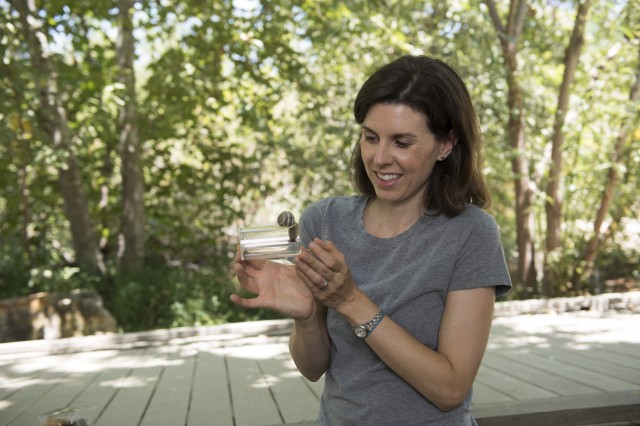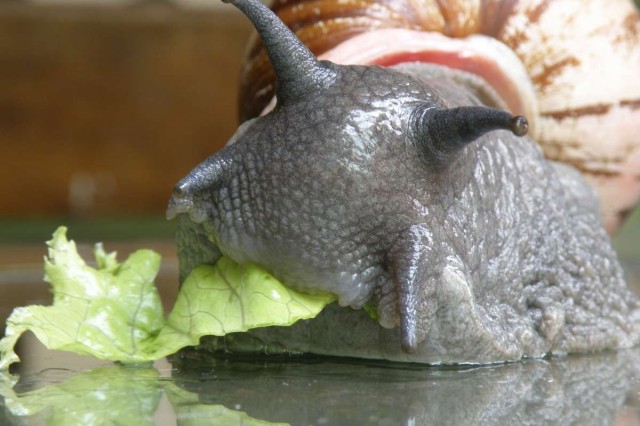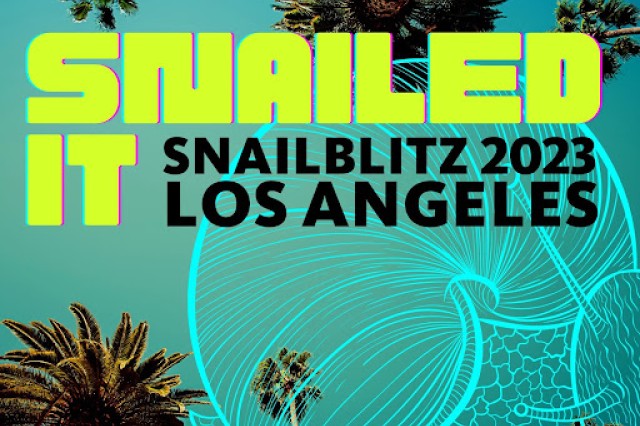
The Hart Museum remains closed. Los Angeles County has approved a plan to transfer the William S. Hart Museum and Park from the County to the City of Santa Clarita.
Snails, Camera, Action!
SnailBlitz slimes forward until March 31. For the first time, the public will vote on the winning images from April 1–7!

“Snails and slugs are easy to find and photograph but the effort pays off big for research,” says Sam Tayag, NHM Community Science Coordinator. “Researchers use these observations to study big-picture issues like, ‘Why do invasive species do so well in some places but are declining in their home habitat?’ Meanwhile, we get to learn more about these weird and charming creatures we live with every day. Slowing down to observe snails and slugs can show us a lot about the small and vibrant habitats around us right here in L.A.”
For the first time ever, the winners of SnailBlitz’s photo contest will be decided by you—the snail-loving public. Voting takes place from April 1 to 7, and winners will be announced on April 8. From banana slugs to garden snails, there are so many wonderful specimens to be seen. Take a look at some of the beauties from years past and the categories below.
Categories:
Rarest Slug/Snail:
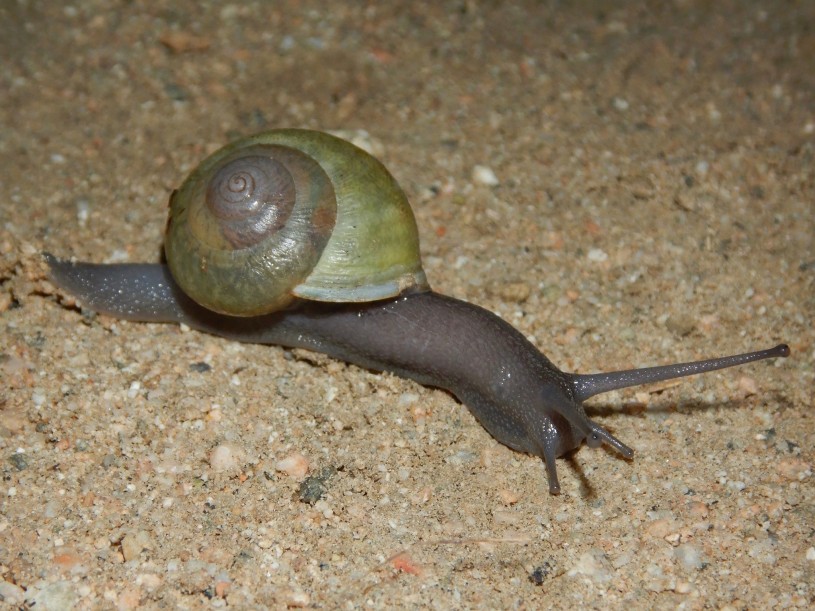
iNaturalist record: www.inaturalist.org/observations/39264726
Species: Helminthoglypta tudiculata
Location: Los Angeles County
The 2020 winner for rarest slug or snail sports a particularly strange coloration. “The green shell color of this native Helminthoglypta tudiculata is an aberration–a genetic irregularity–as the shell would typically be an amber brown. Interestingly, this green mutation has been observed before, but because we don’t know the population size of the species, we don’t know exactly how rare it is. Nonetheless, this observation is quite remarkable!” Jann Vendetti, Twila Bratcher Chair in Malacological Research and Associate Curator, Malacology, and Associate Director, Urban Nature Research Center at NHM.
Best Slug Photo
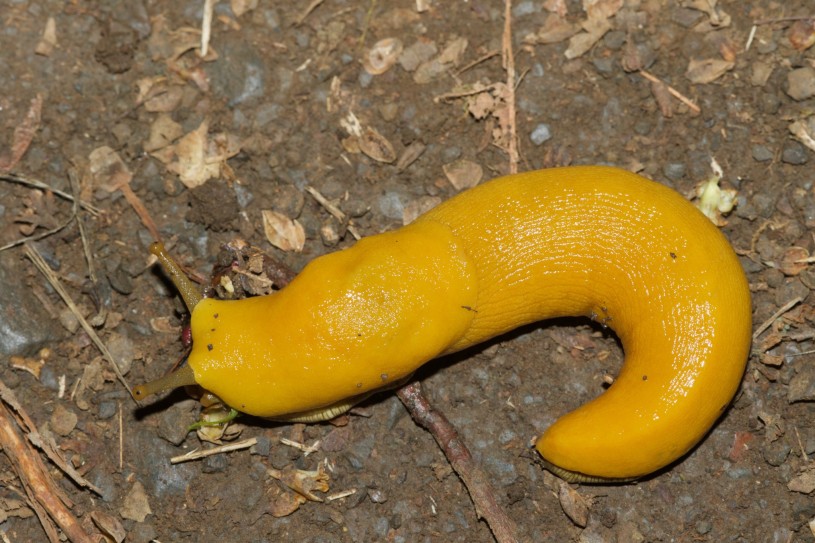
iNaturalist record: www.inaturalist.org/observations/38787598
Species: Ariolimax brachyphallus or Ariolimax stramineus
Location: San Luis Obispo County
Another winner from SnailBlitz 2020! “This photo from San Luis Obispo County beautifully shows a bright yellow native California banana slug. Banana slugs may be better known from central and northern California, but they are not uncommon in and around Santa Barbara and, rather astoundingly, are also found on Palomar Mountain in San Diego County. Though large and sometimes quite conspicuous, banana slugs are not very well studied. Climate and habitat changes may also influence their ranges, which makes their documentation by users of iNaturalist particularly valuable to science.”
Best Snail Photo
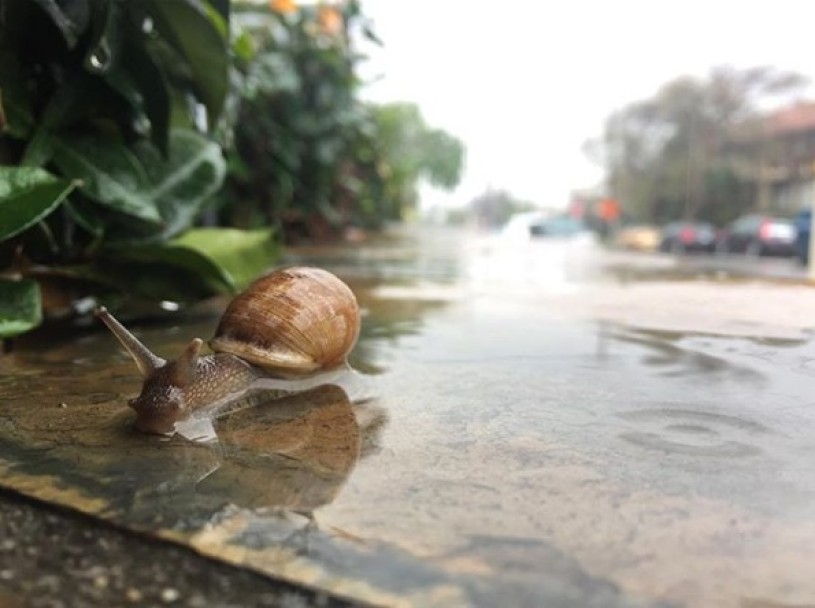
iNaturalist record: www.inaturalist.org/observations/10057414
Species: Cornu aspersum
Location: Los Angeles County
The best photo isn’t necessarily the rarest snail. This winning image depicts a common garden snail—one of the most ubiquitous introduced snail species in Los Angeles. This excellent image captures the slow, slimy beauty of these animals that so often pester our gardens. This image tied for the title of best snail photo in 2018.
Grand Prize
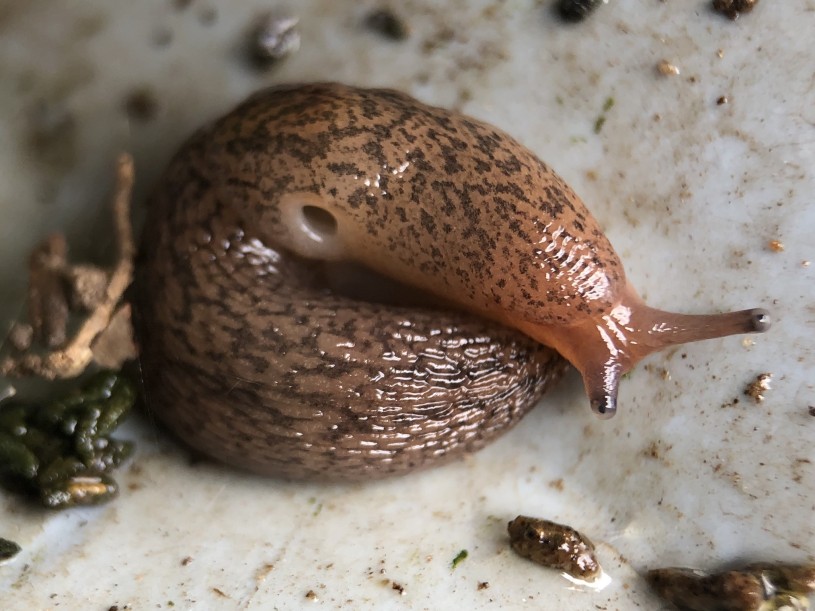
iNaturalist record: www.inaturalist.org/observations/40101249
Species: Ambigolimax sp.
Location: Los Angeles County
This 2020 Grand Prize Winner was another example of a familiar slug or snail, spectacularly shot. “This photo is of one of the most common slugs in urban and disturbed environments in Southern California. Technically, we know only its genus (Ambigolimax), not its species,” says Vendetti. “Until a few years ago, we were aware of only one species in this slug genus that lived in southern California, Ambigolimax valentianus. After surveying for slugs in urban Los Angeles because of the SLIME project, however, we discovered that there was a second species in this genus, Ambigolimax parvipenis (formerly thought to be Ambigolimax nyctelius), living in large numbers throughout the region. Both species are originally from Europe, but have become common in human-inhabited regions throughout the world.” Visual clues like the speckled body patterning suggest it might be A. parvipenis, but only DNA analysis or dissection could tell for sure.
How to take a good snail or slug photo FOR SCIENCE!
Although snails and slugs are mostly nocturnal, on a rainy day you might see them boldly venturing across the sidewalk or crawling on plants and structures.
To find native species, look under:
- Decaying plants
- A decomposing tree trunk
- In and among leaf litter in oak woodland, riparian (located on the bank of a natural watercourse such as river or tidewater), or coastal sage scrub habitat (low-growing shrubs along the coast).
- If you're outside at night with a flashlight, you might find several species.
- Clear photos of the top, sides, and bottom of the snail or slug help with identifying the species.
- Bonus Tip: It’s extra helpful if you can get a photo of the pneumostome (breathing hole) along the right side of the body (the location varies depending on the species).
- If you handle snails and slugs for photos, please be gentle and put them back where you found them. Do not lift a snail by the shell, this can harm them! Avoid touching your face, and sanitize your hands after handling to prevent the possible spread of germs and parasites.
The Rules:
Every photo of a wild (no pets, please!) land snail or slug taken in San Luis Obispo, Kern, San Bernardino, Santa Barbara, Ventura, Los Angeles, Orange, Riverside, Imperial, or San Diego Counties submitted during the two months of SnailBlitz will be eligible. This year, the SnailBlitz team is asking the snail-and-slug-loving public to decide which photo takes the Grand Prize. Other categories include Best Snail Photo, Best Slug Photo, and Rarest Snail/Slug Photo. Only photos meeting the above criteria are eligible.
Participants can share their finds in three ways:
- Upload photos to iNaturalist (They will automatically be included in SnailBlitz 2023. Identify it as “Common Land Snails and Slugs” or “Stylommatophora” if you are not sure which species you have observed.)
- E-mail photos to slime@nhm.org (include the date and location (address or intersection) where each photo was taken
- Post snail and slug photos to Instagram, Twitter, Facebook using #SnailBlitz2023, and NHM staff and volunteers will contact you so your photo can be added to the project. Prizes include NHM snail-and-slug swag, stickers, and maybe even a crocheted slug.
